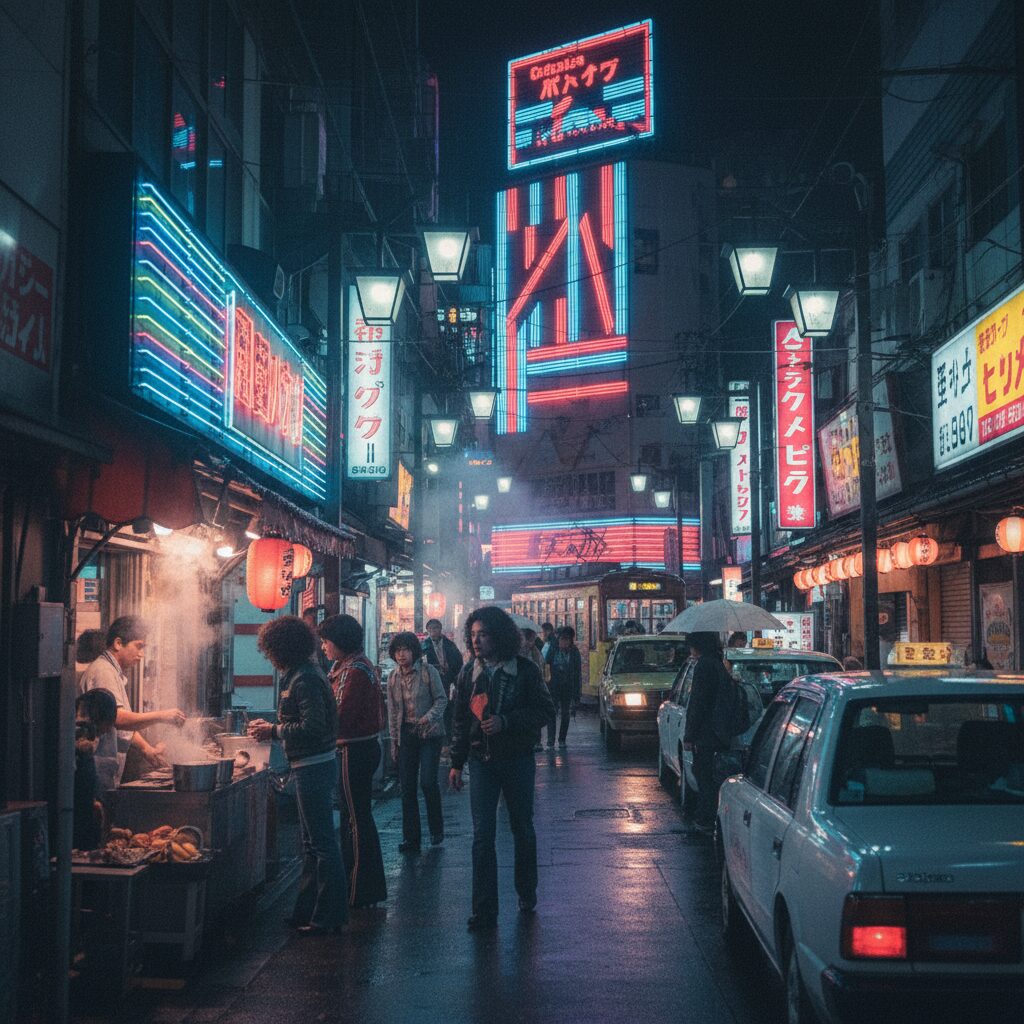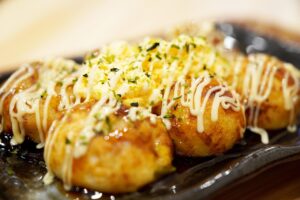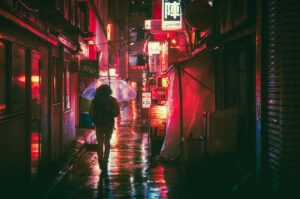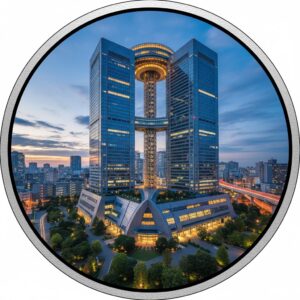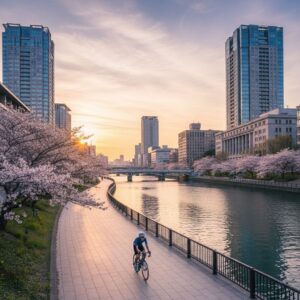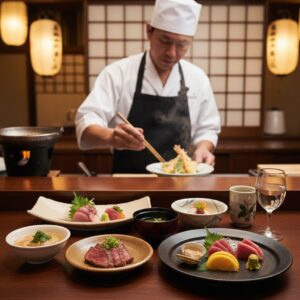Just one stop away from the glittering, hyper-modern nexus of Umeda, a different Osaka awaits. It’s an Osaka that moves to a slower, grittier, and more intoxicating rhythm. Step off the Hankyu train at Juso Station, and you’re not just in a new neighborhood; you’ve tumbled back in time. This is the city’s Showa-era soul, preserved not in a museum, but in a living, breathing, gloriously chaotic labyrinth of neon-splashed alleyways, smoke-filled standing bars, and the ever-present rumble of trains overhead. Juso isn’t polished for tourists. It’s a raw, unfiltered slice of working-class life, a place where the night comes alive with the clatter of mahjong tiles, the sizzle of yakitori on charcoal grills, and the hearty laughter of locals unwinding after a long day. For the traveler seeking the real pulse of this vibrant metropolis, a night in Juso isn’t just a recommendation; it’s an essential pilgrimage into the heart of what makes Osaka truly unforgettable. It’s a district powered by the constant flow of humanity, a crossroads where paths to Kobe, Kyoto, and Takarazuka converge, spilling people from all walks of life into its welcoming, wonderfully weathered arms. Forget the guidebooks for a moment and prepare to get lost in a world that time, thankfully, decided to leave wonderfully intact.
For a different but equally authentic dining experience, consider exploring the intimate world of Osaka’s kappo cuisine in nearby Fukushima.
The Pulse of Juso: Where Three Lines Converge
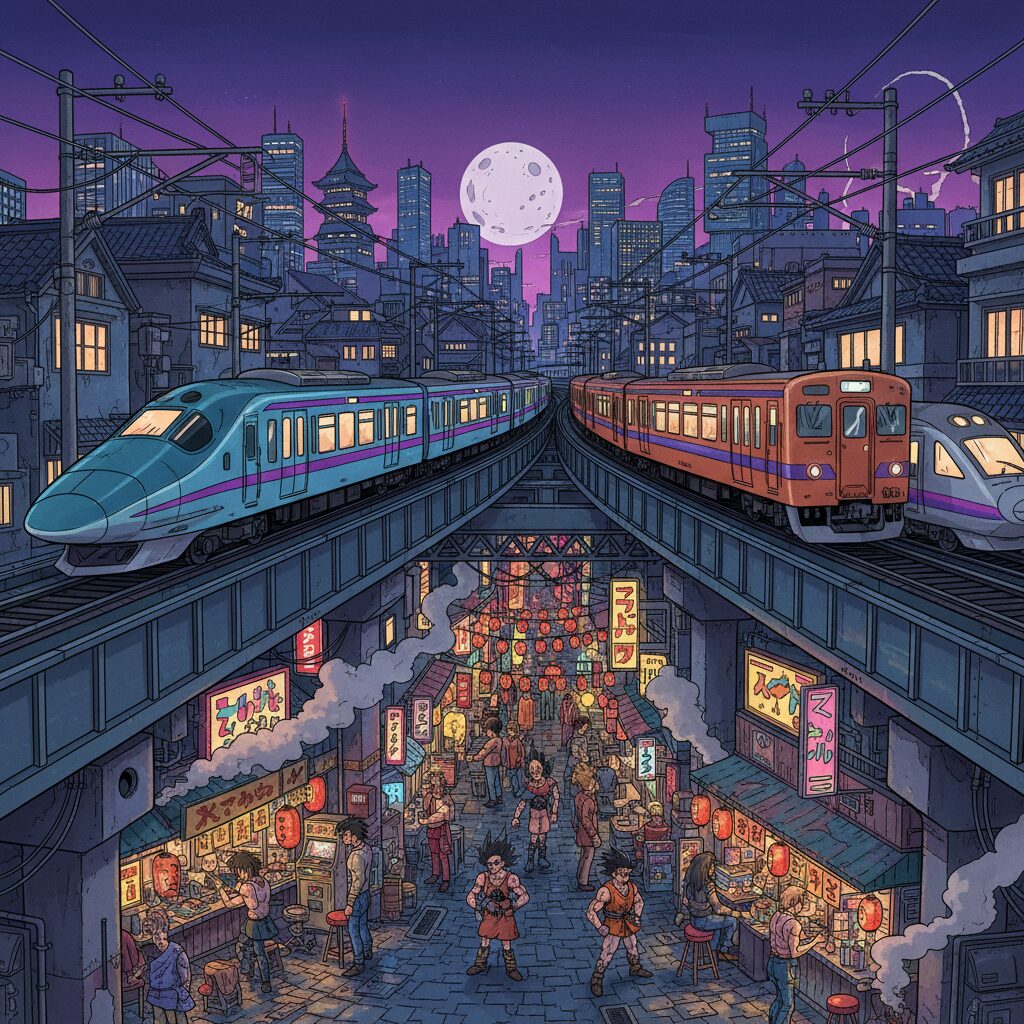
The story of Juso is inscribed on the railway tracks that run through its core. Juso Station is more than just a transit hub; it serves as the driving force of the district. As a vital junction for the Hankyu Railway, its platforms are in constant motion, hosting the daily dance of urban life. The Kobe Line transports commuters and dreamers to and from the fashionable port city. The Takarazuka Line carries passengers toward the home of the renowned all-female musical theater troupe. Meanwhile, the Kyoto Line links Osaka to the ancient capital, serving as a channel for culture and history. This continuous intersection generates a distinctive energy. Unlike a terminal station where journeys conclude, Juso is a place of perpetual transition, and this fleeting spirit permeates the streets below. As trains clatter and screech on the elevated tracks, waves of people spill into the maze of arcades and alleys extending from the station’s east and west exits. These are not tourists with cameras but office workers loosening their ties, students grabbing an inexpensive meal, and residents heading home. This daily flow of departure and return fuels the hundreds of small businesses packed into every available inch. The district’s character is shaped by the demands of this varied, constantly moving population: quick, affordable, and unpretentious. The air vibrates with a purposeful energy that is both chaotic and comforting—the sound of a community built around the train schedule’s rhythm. To truly understand Juso, you must pause for a moment and sense this pulse, the relentless, rhythmic heartbeat of a neighborhood powered by steel wheels and the collective vitality of a city in motion.
A Walk Through Time: Juso’s Showa Retro Soul
Exiting Juso Station feels like stepping through a curtain into another decade. The Showa era (1926-1989), a time of dramatic change and post-war economic growth in Japan, is not just history here; it defines the worn, lived-in character of the whole district. While other parts of Osaka rushed toward a future of glass and steel, Juso seemed to pause and settle comfortably into its own identity. The result is a remarkably preserved urban scene that resembles a movie set more than a contemporary neighborhood. The covered shopping arcades, or shotengai, exemplify this. Their arched ceilings, often made of faded corrugated plastic, cast a nostalgic, diffused light. Below, shopfronts display signage with typography and styles that have been out of fashion for decades. Traditional butcher shops sit side by side with stores selling classic Japanese sweets, their arrangements seemingly unchanged over generations. The sounds create a symphony of the past. The persistent, rhythmic clatter and jingling from a pachinko parlor spill onto the street, a soundscape as characteristically Japanese as a temple bell. From a second-story window, the sharp click of mahjong tiles might be heard, a game still played with quiet focus in hidden clubs. The architecture is modest and intimate in scale. Two- and three-story buildings lean close together, their facades a mosaic of tile, stucco, and weathered wood. Overhead, wires hang in tangled webs, while the warm glow of red paper lanterns, or akachochin, invites you into alleys so narrow you could almost touch both walls simultaneously. This isn’t a staged retro theme park; it’s authentic, weathered and smoothed by decades of daily life. The air itself feels dense with history, carrying the scent of aged wood, incense from a tiny neighborhood shrine, and the lingering aroma of countless meals prepared and shared in these very streets.
The Culinary Maze: Eating and Drinking Like a Local
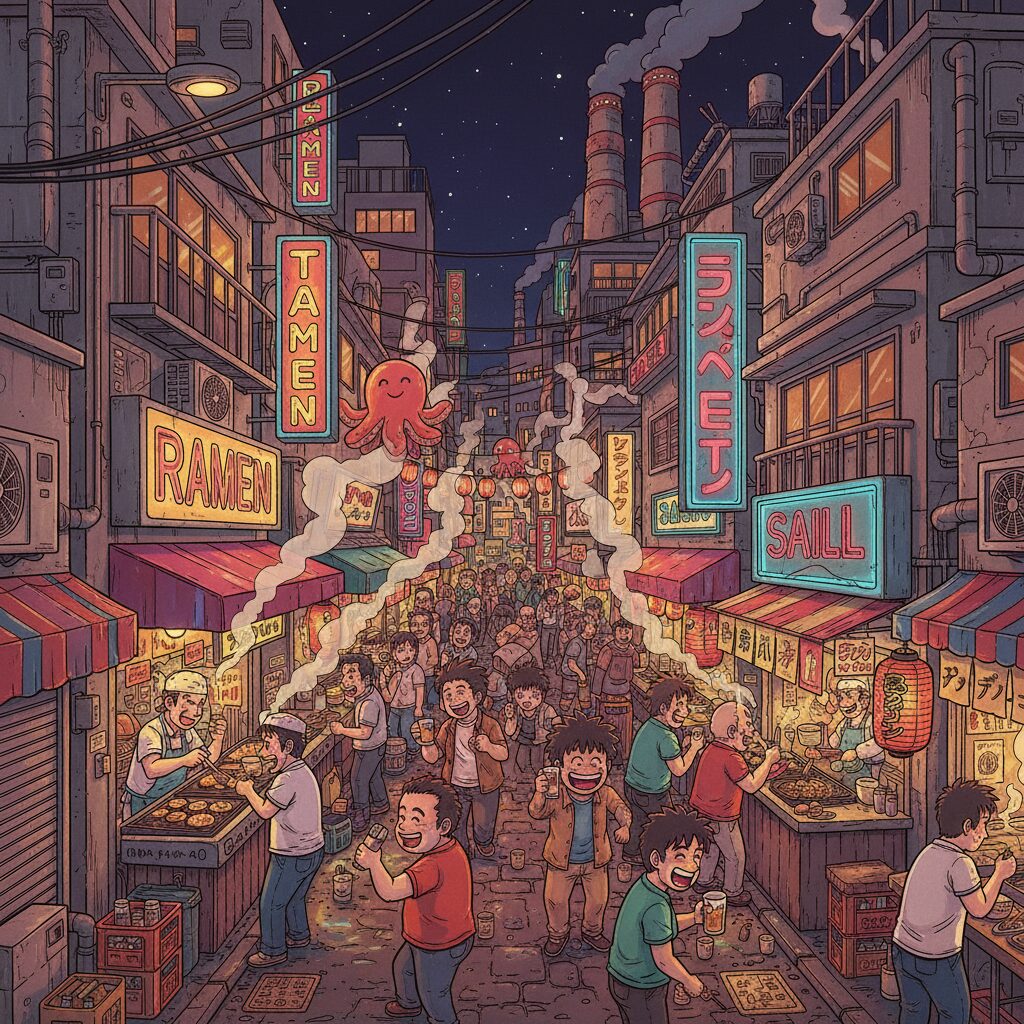
Juso’s main charm, especially after dark, lies in its extraordinary concentration of places to eat and drink. It serves as a true culinary playground for those who appreciate authenticity over sophistication. This district offers a democratic feast where just a few thousand yen can provide an unforgettable gastronomic adventure. Forget reservations and white tablecloths; the best experiences in Juso are found shoulder-to-shoulder with locals in venues that emphasize flavor and value above all else.
Tachinomi Culture: The Standing Bar Experience
The quintessential Juso experience begins at a tachinomi, or standing bar, which serves as the social heart of the neighborhood. These tiny spaces foster camaraderie over affordable drinks and simple, delicious snacks called otsumami. The concept is refreshingly straightforward: no chairs, no fuss. You find a spot at the counter, often a well-worn plank of wood, and immerse yourself in the flow. The atmosphere is casual and friendly—perfect for a quick drink after work, a pre-dinner warm-up, or an extended session of bar-hopping. Ordering is simple: a frothy glass of draft beer, or nama biru, is the typical starting point, followed perhaps by a highball or a small carafe of sake. Food menus are usually displayed on wooden plaques or paper strips affixed to the wall. Familiar favorites include doteyaki, a rich stew of beef sinew and konjac simmered in miso, or glistening skewers of grilled chicken. The social etiquette is unwritten but vital—these are not places to linger for hours when crowded. You order, drink, eat, and then make room for the next guest. This quick turnover keeps the energy lively and prices low. Don’t be surprised if a fellow patron strikes up a conversation; tachinomi are inherently social, breaking down barriers and offering a genuine glimpse into the local community.
Yakitori and Yakiniku: The Scent of the Streets
As you wander through Juso’s alleys, one distinctive aroma will inevitably draw you in: the intoxicating scent of meat grilling over charcoal. This is the siren call of the district’s many yakitori (grilled chicken skewers) and yakiniku (grilled meat) spots. These establishments tend to be small and smoky, with the grill master commanding the center stage. Sitting at the counter offers a front-row view of this culinary performance. Watch as skewers are skillfully turned over glowing coals, seasoned with either a sweet-and-savory glaze (tare) or a simple dusting of salt (shio). The menu celebrates the entire chicken, from familiar cuts like thigh (momo) and breast (mune) to more adventurous parts such as heart (hatsu), liver (rebā), and crispy skin (kawa). Ordering is usually a la carte, allowing you to sample many varieties. Yakiniku restaurants, while often featuring seating, share the same communal, hands-on dining philosophy. Small charcoal or gas grills are placed at each table, and you cook thinly sliced beef, pork, and offal to your liking. The sizzling meat, rising steam, and shared experience of cooking and eating together make for a lively and deeply satisfying meal. In Juso, these are not merely restaurants; they are institutions where friendships are forged and deals struck over the sacred fire of the grill.
Negiyaki and Okonomiyaki: Juso’s Signature Dish
While Osaka is renowned for okonomiyaki, the savory “as-you-like-it” pancake, Juso is widely credited as the birthplace of its more refined cousin, negiyaki. According to legend, it was invented at a legendary Juso restaurant called Yamamoto, which remains a pilgrimage spot for food enthusiasts today. The key difference is the star ingredient—where okonomiyaki features a generous amount of cabbage, negiyaki is packed with finely chopped green onions (negi), resulting in a lighter, more aromatic, and arguably more complex flavor profile. The batter is thinner, and instead of the thick, sweet okonomiyaki sauce, it’s typically seasoned with soy sauce. Watching a chef prepare negiyaki on a large flat-top griddle, or teppan, is a captivating display of skill. The batter is spread thin, layered high with green onions and other ingredients such as beef tendon or squid, and cooked to a perfect golden brown. The final dish offers a masterful balance of textures and flavors—crispy outside, tender and savory inside, with the fresh, sharp essence of green onions cutting through the richness. To visit Juso without trying negiyaki is to miss a piece of its soul. It’s the district’s contribution to the culinary world, a humble yet perfect dish born from the creativity of this vibrant neighborhood.
Late-Night Ramen and Hidden Gems
The night in Juso doesn’t end until the last bowl of noodles is slurped. The culture of shime no ramen, or “finishing ramen,” is strong here. After an evening of drinking, a hot, savory bowl of ramen is seen as the ideal conclusion. Hidden in the backstreets, small, often counter-only ramen shops each boast their own secret broth recipes and perfectly cooked noodles. These places tend toward minimalistic decor but are fanatical about their craft. Beyond ramen, late-night explorers can discover other delights. Specialist gyoza (dumpling) houses serve pan-fried parcels of juicy perfection, and old-fashioned kissaten (coffee shops) have somehow endured modern times, offering a quiet refuge with a cup of coffee and a slice of toast deep into the night. The joy of Juso’s food scene lies in this sense of discovery—turning a corner and stumbling upon a tiny, family-run spot that has been perfecting its specialty for decades. Every alley holds the promise of new flavors and unforgettable meals.
Beyond the Bars: Juso’s Other Faces
While Juso’s reputation is largely rooted in its nightlife, the neighborhood possesses many layers. To fully appreciate its character, one must look beyond the glow of izakaya lanterns and explore the diverse aspects of its identity, ranging from the controversial to the tranquil.
The Fuzoku Frontier: Navigating the Red-Light District
It’s impossible to discuss Juso’s raw character without recognizing its role as one of Osaka’s most notable red-light districts, or fuzoku. This facet of the neighborhood is confined to certain blocks, where its presence is unmistakable. The streets are lined with brightly lit establishments, often adorned with glamour shots of women. Men in suits, known as touts, sometimes stand outside, though they typically do not act aggressively toward foreigners. For curious travelers, this area is best observed rather than engaged with. It embodies the gritty, adult-oriented side of Juso’s entertainment scene, a remnant of a less-regulated past. Visitors are advised to stay aware, walk with intention, and politely decline any offers. This district exists side by side, often on the same street, with family-run restaurants and shops. This contrast lies at the heart of Juso’s complex identity—a neighborhood that is both a family community and a playground for adult pleasures, a candid reflection of every facet of urban life.
The Silver Screen and Fading Theaters
In an era dominated by streaming platforms and multiplex cinemas, Juso remains a stronghold for the classic movie-going experience. The district boasts several historic theaters that have withstood the march of modernization. The Juso Cinema Palace and the Seventh Art Theater are local landmarks, treasured for their independent spirit and diverse programming. They frequently showcase art-house films, foreign movies, and Japanese classics rarely found elsewhere. The theaters themselves are relics, with their marquees, weathered posters, and charmingly vintage interiors evoking cinema’s golden age. Visiting one is more than watching a film—it’s a form of cultural preservation. These venues offer a quiet, reflective contrast to the lively energy of nearby streets and serve as a poignant reminder of when the movie palace was the grandest escapist venue—an enduring role that Juso continues to fulfill in its own unique way.
The Yodogawa River: A Natural Escape
Just a short walk from Juso’s chaotic center lies a vast haven of calm: the banks of the Yodogawa River. This broad, slow-moving river creates a stark contrast to the neighborhood’s cramped alleys. The riverbank acts as a green lung for the city, drawing locals who seek a break from the urban sprawl. Here, people jog, cycle, walk their dogs, or simply sit on the grassy banks, gazing at the distant Umeda skyline. The river sets a different pace, governed by sunrise and sunset rather than train timetables. It also hosts one of Osaka’s most spectacular events: the Naniwa Yodogawa Fireworks Festival. Held every August, this grand pyrotechnic show attracts hundreds of thousands of spectators to the shores, turning the peaceful area into a lively, celebratory crowd. For anyone spending an evening in Juso, a stroll along the Yodogawa offers a perfect reset—a moment of serenity to absorb the district’s sensory richness before venturing back out or heading home.
Practical Guide for the Intrepid Explorer

Juso’s rugged charm is remarkably approachable, but a bit of preparation can make your experience smoother and more enjoyable. Think of these tips as a guide for exploring this captivating urban wilderness.
Getting There and Getting Around
Access is straightforward. Juso is the first stop from the main Hankyu Osaka-Umeda Station on all three major lines: Kobe, Takarazuka, and Kyoto. The ride takes just three to four minutes but transports you to a completely different world. Upon arrival, walking is your best option for getting around. The area is compact, with all the excitement centered in the shotengai and side streets near the station’s east and west exits. In fact, getting purposefully lost is one of the best ways to explore. Put your map aside for a while and let your senses lead the way. Follow the most tempting aroma or the sound of laughter down a narrow alley—you’re sure to find something wonderful.
When to Go and What to Expect
Juso truly comes alive at night. Although some shops and eateries operate during the day, the district really awakens around 5 PM as commuters begin their after-work routines. Activity peaks between 7 PM and 10 PM, maintaining a vibrant energy that often lasts until the last train. Weekends—especially Friday and Saturday nights—are the liveliest times. Be ready for a mostly cash-based environment. While larger chains may accept credit cards, the small, independently owned bars and restaurants that form the heart of Juso nearly all deal in cash only. It’s wise to visit an ATM beforehand. Language can be a barrier: English menus are rare, and staff who speak English even rarer. Still, don’t let that stop you. A friendly demeanor, pointing, and basic Japanese phrases like “Kore, kudasai” (“This one, please”) will take you far. Locals are generally patient and grateful for the effort, and the slight challenge adds to the authenticity of the experience.
First-Timer’s Itinerary: A Night in Juso
For an ideal introduction, try this classic Juso itinerary. Begin your evening around 6 PM at a lively tachinomi near the station. Find a spot at the counter, order a draft beer and a plate of doteyaki to whet your appetite and soak in the vibe. Then, head to a specialty restaurant for the main meal. Look for a well-known negiyaki place to enjoy Juso’s signature dish, watching it freshly prepared on the teppan. After dinner, embark on some bar-hopping. Explore the main Fureai Dori shotengai on the west side or the Shonben Yokocho (Piss Alley) on the east, stopping at any small izakaya that catches your attention for another drink. Finally, to wrap up the night like a true Osakan, find a late-night ramen shop for a comforting bowl of shime no ramen before catching your train home. This straightforward plan lets you experience the full range of Juso’s nightlife in one unforgettable evening.
The Unspoken Rules: Juso Etiquette
Navigating Juso’s social scene is straightforward with a few cultural tips. Many small pubs and izakaya operate a system called otoshi or sekiryo, which is a small, mandatory cover charge that includes a modest appetizer. Don’t be surprised when it appears on your bill; it’s a common practice. In busy standing bars, be considerate of your space and time, as these venues have a high customer turnover. It’s polite to order, enjoy, and then move on to allow others to take your spot. When photographing, use discretion. Juso is a residential and working neighborhood, not a tourist spot. Taking photos of the general streetscape is acceptable, but avoid close-up shots of people or interiors of small venues without first asking permission. A simple gesture with your camera accompanied by a questioning look usually suffices. Lastly, embrace the local spirit—a warm “Konbanwa” (Good evening) when entering a bar and a sincere “Gochisosama” (Thanks for the meal) when leaving will be warmly appreciated. The residents of Juso take pride in their neighborhood, and showing respect and genuine interest will lead to a richer experience.
Juso’s Enduring Allure
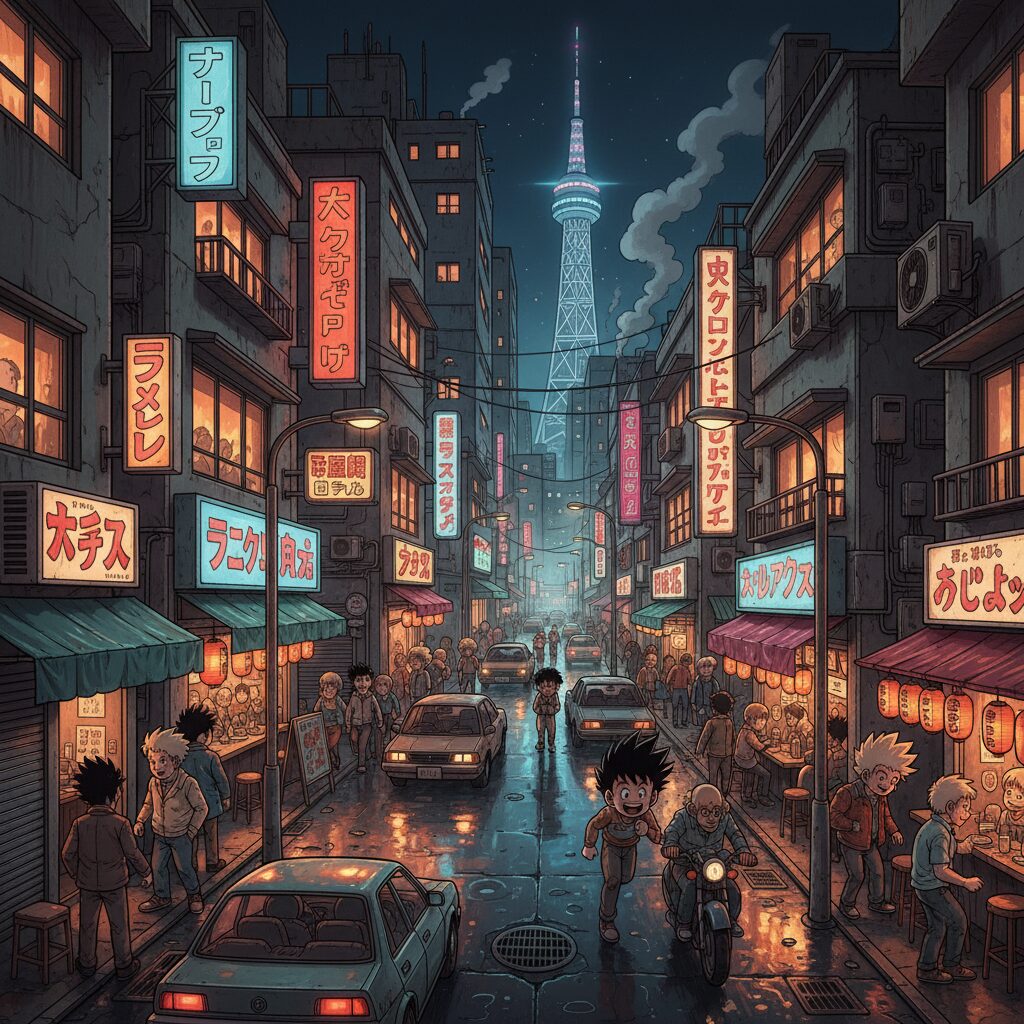
Juso will never be the most beautiful or polished district in Osaka. It lacks the historical grandeur of Kyoto and the futuristic shine of Umeda. Yet, that is exactly where its strength lies. Juso is unapologetically and stubbornly itself. It is a district full of character, a place where the past is not just remembered but lived every single night. This spirit is found in the taste of a 50-year-old negiyaki recipe, the sound of a train rattling overhead, and the warm, fleeting connection made with a stranger over a shared counter. An evening here is a deep immersion into the city’s working-class soul, a reminder that the most memorable travel experiences are often just one stop off the beaten path. It challenges the senses and rewards the curious. For those who believe a city’s true story is told not through its landmarks but through its local haunts, Juso offers a narrative that is rich, complex, and utterly captivating—one that continues to unfold beneath the humble glow of a thousand red lanterns.
